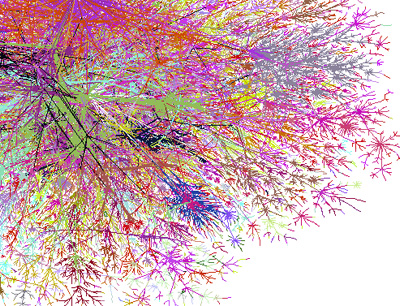Linked Data, fit for the future

Anyone who has ever tried to reach a several years old Internet link knows: It likely will not work and the information can only be found via a different URL or not at all; data on the Internet is ephemeral. So-called “linked data” intensifies that problem: Data, not only websites, can be reached and linked via their own URIs (Uniform Resource Identifiers). Linked data enables users and applications to link and evaluate data that previously wasn’t connected and thus to interpret new data connections. To preserve access to linked data, the EU Commission funds the project “PRELIDA” (Preserving Linked Data). Computer scientists from the research institute STI in Innsbruck are involved in that project.
Preserving linked data
“The primary objective of the project is the establishment of a multidisciplinary community around linked data and digital preservation areas,” explains Serge Tymaniuk from the project staff. The potential for linked data is enormous: All over the world more and more public institutions publish their data freely on the web for everyone to use. Prominent examples are government data portals in the USA and the United Kingdom, but companies and research institutions are also working on initiatives in that field. “Probably the best-known example in this field is DBPedia. This project allows applications to access data from Wikipedia by extracting information from standardized forms in Wikipedia and also enables linking and visualizing of this data,” says Serge Tymaniuk.
Connecting the linked data and digital preservation communities is the main goal of PRELIDA. In order to reach that objective, the first of several planned workshops has already taken place in Tirrenia in Pisa, Italy. In addition to that, there are two summer schools planned, the first of which was held in the first week of September. “Linked data applications are very promising, but to keep that promise, it is very important to keep individual data points available in the future via data preservation. We aim to guarantee that we can still understand and manage the data over a long time period.” There are several challenges to overcome: Linked data has specific characteristics in terms of structuring, inter-linkage, dynamicity and distribution which have to be taken into account.
Multi-disciplinary community
PRELIDA is led by the Institute of Information Science and Technologies of the National Research Council (CNR-ISTI), based in Pisa, Italy, which is the largest research institute working in the area of information science and technologies in the country. The project consortium also includes the European Alliance for Permanent Access (APA), a non-profit organisation founded under Dutch Law in 2008, one of the global excellence centers for digital preservation; the University of Huddersfield and its School of Computing and Engineering, which is the leading UK scientific research institute with a particular focus on precision technologies in the UK; and the University of Innsbruck and its Semantic Technology Institute (STI) Innsbruck, which specializes on the semantic Web technologies and its applications for different domains. Additionally, the project consortium includes two associate partners: namely, Europeana Foundation, the Netherlands, focusing on maintaining digital access for cultural heritage and data exchange; and Semantic Technology Institute International association, which provides commercial services in the domains of event management, training and R&D. PRELIDA is funded by the European Commission, with a total budget of almost one million Euro. The project will run until December 2014.